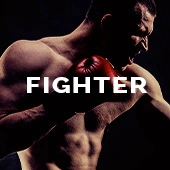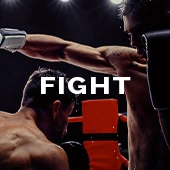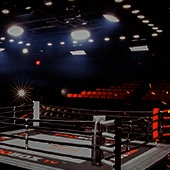By Alexey Sukachev
Today, relatively unknown 19-year old prodigy Kosei Tanaka will attempt a quantum leap up in class against Julian Yedras. As has been the case for all of his pro fights to date (Saturday marking number five), Tanaka faces a far more experienced foe in Yedras, a reigning titlist and veteran boxer from Mexico.
A win over Yedras (24-1, 13 KOs) will mean the world to Tanaka, as their headliner at Park Arena in Komaki, Japan comes with a WBO strawweight title at stake. Such a feat (if happens) will make another fiery example of a newest trend in boxing, which is much greater felt in the Orient.
One of the wise men said one day that there are three forms of lies: a lie itself, a blatant lie, and then statistics.
Stats can be delusional, cautionary, imaginary, and whatever other type you prefer them to be as they are controllable to a degree when they can be easily manipulated. But in sports, they are sometimes the only objective realm even if it means all the aforementioned properties.
Boxing is no exception. Stats can be roughly divided into two sets: one is about a single fight; another one deals with a boxer’s career in prizefighting.
While the first set—often misrepresented as only the punch stats—can be more precise, attention is more often drawn to the second one. Basking in the glow are all-time records, specifically those hard to be broken.
Not all the records have to do with big numbers, although the record of Joe Louis for the longest title reign and for a number of defenses of the title (the undisputed version of it, not just any alphabet strap) in any weight class is yet to be broken after almost 70 years of trying.
A bit less prestigious is a record on the opposite end of the numerical scale. It deals with the sport’s fastest climbers; those who were able to get top honors in the shortest span of time and/or number of fights.
While a bit marginal, this record is no less prestigious. For hardcore fans it exemplifies a career path, they wish to be fulfilled by their idols— no mismatches, no tune-ups, no waste of time, but only meaningful fights as early as possible in their respective careers.
It looked like the bar was set exceedingly high some 40 years ago by Saensak Muangsurin of Thailand. He captured his portion of the WBC junior welterweight title in just three fights. He did so against a fighter with a 34-3-9 record.
This achievement seemed to be one that would never be broken.
It still hasn’t been discarded but it has come very close to that, last March by Vasyl Lomachenko in a bid to claim a featherweight belt in his second pro fight. The Ukrainian prodigy came thisclose to winning the WBO featherweight title that night, coming up two points short in a split decision loss to grizzled veteran Orlando Salido.
Lomachenko took the lesson valiantly and did his homework well enough to get a major win (and the very same belt) in his next fight versus Gary Russell Jr.
Lomachenko was arguably the greatest amateur fighter of all time with a record of 396-1, and that loss coming in the final of the World Amateur Championships and twice avenged. Moreover, he is also known to have competed in World Series of Boxing, which considered by some (including FightFax) as a professional pedigree.
But Lomachenko isn’t a one-time wonder in terms of a boxing boom. Bounds of the earliest climbers are being heavily probed nowadays.
Beibut Shumenov went for a partial title in his eight outing, coming up short (although with highly debatable scores) before claiming a belt one fight later (once again, featuring a questionable decision). Guillermo Rigondeaux also had a single-digit number of contests before he challenged and drubbed Rico Ramos for junior featherweight glory, before going on to claim the World 122 lb. championship in a rousing win over Nonito Donaire, who two nights earlier was honored as the 2012 Fighter of the Year.
It’s no accident, but rather an active trend.
Going in the front of the line (save for Lomachenko) are ambitious boxers from Asia, particularly Japan.
A record in Japan held by Joichiro Tatsuyoshi (winning a world title in eight fights) stood for 20 years before Kazuto Ioka exploded it with a 5th round TKO over established 35-0-1 WBC strawweight champion Oleydong Sithsamerchai. The Thai was no fluke, having defended his title six times. Ioka—all of 21 years of age at the time—simply tore him apart in just his 7th pro fight.
Within a year and a half, Ioka proved his relevance, defending his belt twice (including a win over solid Juan Hernandez) and unifying it with Akira Yaegashi (an early challenger himself) in 2012 contender for Fight of the Year. However, by the end of 2012, Japanese boxing community had another wonder to talk about.
His rise was predicted, his power, however, has been underestimated it seems. If there were any doubts, Naoya Inoue erased them quickly.
In his fourth fight he acquired Japanese light flyweight national title, in the next appearance came out with prestigious regional OPBF regalia. With just five fights under his belt, he challenged possibly the most established champion of his division in Adrian Hernandez (WBC version) and destroyed him in six one-sided rounds.
A prolonged one-sided beating of the Thai challenger Samartiek Kokietgym, coupled with a leap up in weight and a two-round demolition of the best super flyweight in the world named Omar Andres Narvaez, was just enough to win BoxingScene’s 2014 Fighter of the Year award— a memorable feat for a fighter who is still just 8-0 (7KOs).
This means that Tanaka will try to best Inoue by a single fight and to improve an all-Japanese record. While not an international achievement, it can be compared to the very best of his peers.
The 19-year old fighter will be considered a prohibitive favorite against Yedras, who has to get a signature win among his 27 to date. His best result— a close but a convincing loss to Nicaraguan Carlos Buitrago, who was derailed in his two title attempts— underlines his skill level. Equally conspicuous is a record of Tanaka, who scored three wins over established gatekeepers before stopping countryman Ryuji Hara—18-0 and a consensus Top 10 contender at the time—to clinch the OPBF title.
“Kosei Tanaka is a sensational fighter who was tipped for stardom from the day he decided to turn professional in 2013,” comments Takahiro Onaga of AsianBoxing.Info, an expert in Oriental fight scene. “His promoter Kiyoshi Hatanaka said that he might try to set world record for quickest world champion even before debut. While that never seemed possible, due to Japanese domestic rule, his claim made it clear that he thought Tanaka was super talent.
“Style-wise he’s a boxer-puncher. Very quick on his feet, very sharp punches with amazing handspeed, very accurate and lovely combinations. There are some flaws but you expect that of a fighter with so little experience”.
What is this Japanese domestic rule Onaga is talking about?
“A Japanese fighter can probably never break a record of Lomachenko or Muangsurin. That is because they must “graduate” to fight for a world title. The rule is that a Japanese fighter must win a Japanese or Oriental (OPBF) title before a world title fight in Japan. In theory a fighter could well fight for a world title in his second bout if fought outside of Japan but it is not likely to happen any time soon. JBC (Japanese Boxing Commision) have a tiered license system that make a fighter turn pro with a B (6 rounds) or C license (4 rounds). If a fighter is a good amateur they might get a chance to debut in 8 rounds (like Naoya Inoue) but that is very rare.
“So fight your first bout (6 or 8 round), and then you need to graduate (win a national or OPBF title), then fight for a world title. In theory, a Japanese fighter can go world title in his third in Japan but I do not think it is likely any time soon.”
It’s informative to compare the latest generation of Japanese prodigies— Inoue, Ioka and Tanaka—side-by-side to understand where Tanaka ranks among the group.
Added to the mix is Naoya’s younger brother Takuma, a 4-0 (1KO) junior bantamweight, who challenges Filipino Mark Anthony Geraldo (31-5-3, 14 KOs) for a vacant OPBF title in July.
*Only major (WBA/WBC/IBF/WBO) belts are counted; no interim titlists are considered.
**Julian Yedras is a co-challenger for a vacant title, not a champion
“Yes, he is considered on the same sort of level as Ioka and Inoue. He is considered a super talent. Naoya seems to be viewed as a better talent, but Tanaka and Takuma Inoue both viewed very highly and expected to have major success, just like Naoya and Ioka,” adds Onaga.
All four were strong amateurs, although none achieved real international glory. Tanaka’s amateur record is 46-5, 13 KOs, and he was a multi-time national (at various ages) champion and also 2013 Asian Youth Championship Silver medalist.
The best of the crop, Naoya Inoue came just a fight short of taking part in 2012 London Olympics, dropping a 16-11 decision to experienced Kazakh Birzhan Zhakypov in a final qualifier.
“Japan domestic amateur system seems to make more professional ready fighters than good amateur fighters. The pugilists are not usually successful in major international tournament, but they typically “pro ready” at a very young age. Amateurs here start young and develop a lot of skill after training for years in unpaid part of the sport.
Fighters compete in tourneys like U15 tournament, schoolboy tournaments and things. We see it the talent of young pro with fighters like Inoue, Ioka, Ryosuke Iwasa, Tanaka, Sho Nakazawa and Toshiyuki Igarashi, and Takeshi Uchiyama are also good amateurs,” comments Onaga.
The standard of going right after the crème de la creme has gained high praise in modern Japanese boxing, which flourishes with seven world champions—unlike some other Oriental scenes like the nearly-vanished Korean market and visibly degraded Thailand fights scenes. It’s indeed a trend, which allows top prospects not to lose energy and talent fighting no-names, trialhorses and various sorts of tomato cans.
Now compare it to the Thai fight scene, where you can go 44-0 before being not-so-shockingly exposed against a real champion (like it was a case of Chonlatarn Piriyapinyo against Chris John). Hell, just look at Gary Russell Jr., who was 24-0 and considered arguably the brightest American prospect, until he was taught a lesson by the record-tying Ukrainian with a 1-1 record at the time.
“I think (this is) a trend that is based on trying to make a name overseas,” Onaga notes. “Do something special. Western fight fans haven’t really taken a note of Naoya until he beat up Hernandez and Narvaez, and I think the idea is to be special. If you good enough to swim you should swim and not just paddle.
“The recognition of the WBO and IBF titles makes it easier to move as quick as Tanaka, though he did want to fight with Wanheng (Menayotthin) for the WBC belt, and not Yedras originally. It’s not really a new trend though; fighters like (Joichiro) Tatsuyoshi, Nobuo Nashiro, Yoko Gushiken – they did it before. I think a lot has to do with the amateur system we have. Very high quality national tournaments here are. Tanaka fought Naoya’s little brother several time in amateur and that certainly helped both men when they turned pro. Why go from fighting top amateurs to then fighting journeymen like they do in other countries? I never understand why Olympic champions start fighting poor opponent in UK and US.”
Neither do we, Mr. Onaga.
It’s premature to bestow greatness upon Tanaka. We shall have some understanding of the depths of his talent on May 30. Win or lose, his effort and that of his compatriots to change an approach—and to revolutionize boxing intrinsically—should only be applauded.



